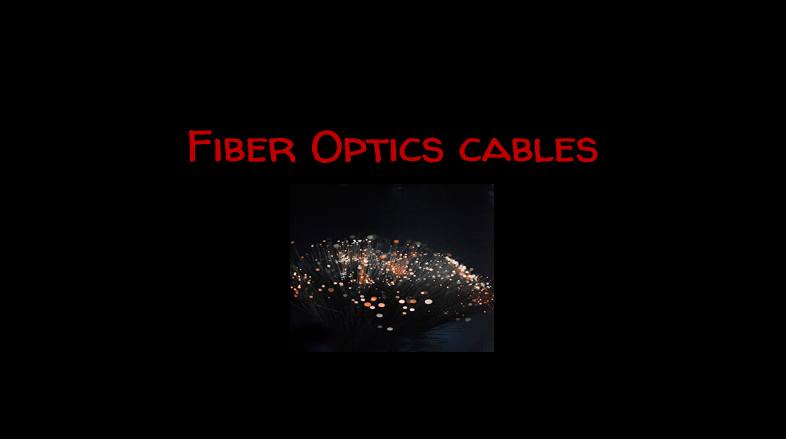Fiber optics cables
 |
| Fig 1: Optical Fiber Cables |
The global fiber optic network currently spans three million kilometers of cables and this number is set to increase by 2020. This article will discuss how a fiber optic cable works, where they’re becoming the most popular besides the Internet, and why they remain an integral part of business communications. The basic idea behind optical transmission is using pulses of light to carry the signal. Fiber-optic cable does it much better than copper wire, meaning you can transmit more data over longer distances quickly and at lower cost. Ever wonder where the cable companies get all their bandwidth? Fiber optic cables are becoming incredibly popular outside of online networking applications like transferring large amounts of data for businesses or providing broadband connection to rural areas via Telemedicine, these fibers are used for everyday items like mobile phones, traffic lights, paying with your debit cards at checkout counters and hospitals that use robotic surgery. Fiber-optic cables transmit data by sending light through a transparent fiber. The fiber is coated with a special material called a cladding. The light is surrounded by the cladding, which transmits it down the length of the fiber. When the light reaches the end of the fiber, it is projected through a tiny hole in the end of the fiber and onto a photo detector.
If we see the types of the optical fiber there are the two types of the optical fiber:
- Single Mode Fiber
- Multi Mode Fiber
Single Mode Fiber
Single mode fiber has the yellow outer layer. Single mode fiber has a very small thin piece of fiber in the middle and that glass that is made of is extremely high quality and when we pass a laser light through it and then it flow very cleanly through that fiber and we can send that laser light a very long distance with the single mode fiber.
Multi Mode Fiber
On the other hand multi mode fiber is the cable that has the orange jacket and it has large diameter piece of the glass in the middle. It can be slightly lower quality as well. What happens is as the laser light enters the multi mode fiber it has a tendency to bounce off the sides of the fiber and we end up losing some of the energy and efficiency of the laser through the multimedia fiber.
Big Difference why we need Single mode and Multi mode fiber cables ?
We need single mode fiber when we need to go for long distance and we need multi mode when we need to go shorter distances but distances that are longer than what we can get using copper ethernet cables.








0 Comments